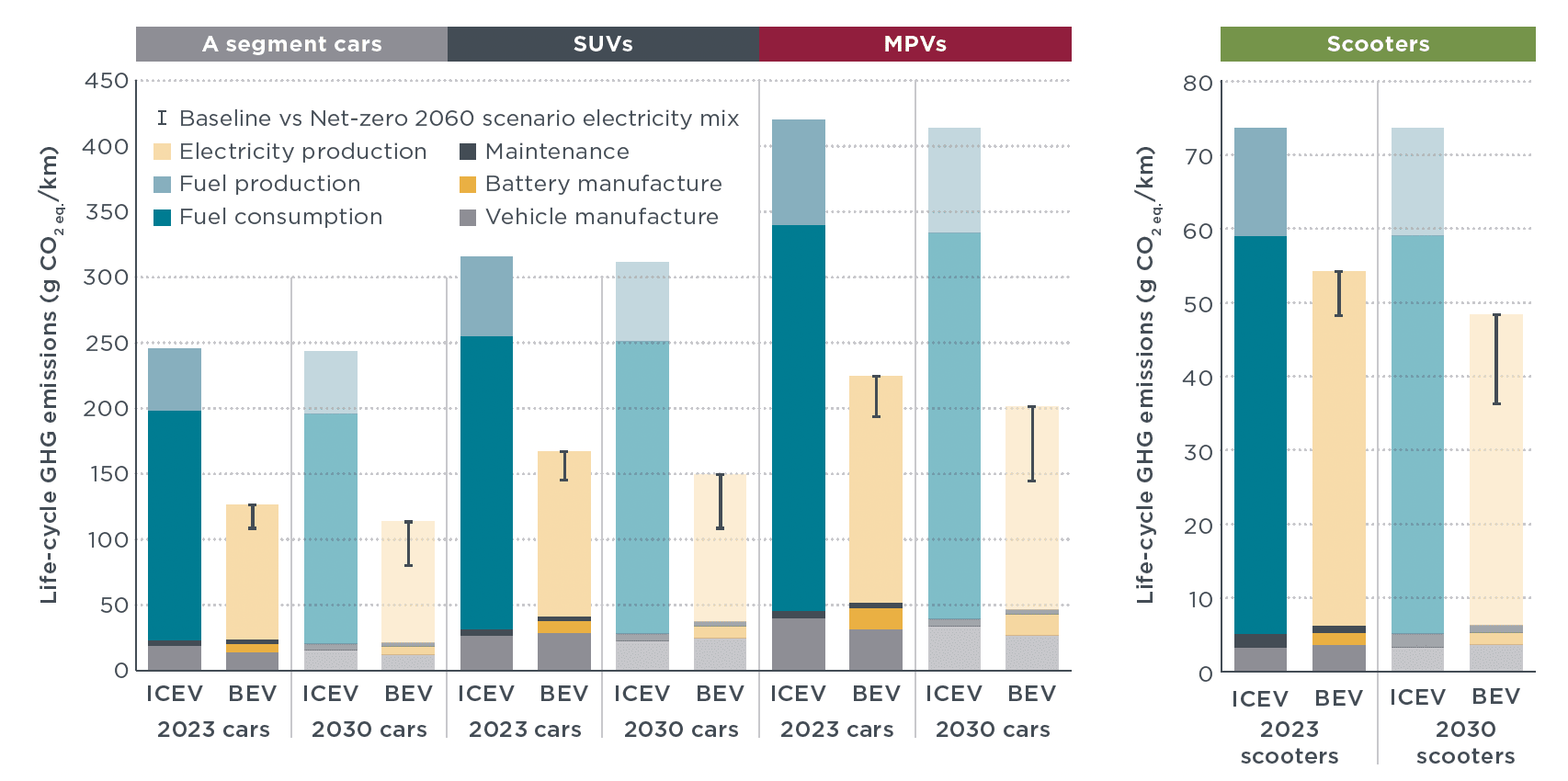Indonesia’s historic announcement proves the country’s transport future is electric
Report
Comparison of the life-cycle greenhouse gas emissions of combustion engine and electric passenger cars and two-wheelers in Indonesia
Baca ringkasan eksekutif disini.
Reaching Indonesia’s target of net-zero greenhouse gas (GHG) emissions by 2060 or sooner will depend in part on the decarbonization of the transportation sector, which today is responsible for about 15% of the country’s GHG emissions. Indonesia is considering a range of measures, including shifting from gasoline and diesel internal combustion engine vehicles (ICEVs) to hybrid electric vehicles (HEVs), plug-in hybrid electric vehicles (PHEVs), battery electric vehicles (BEVs), and hydrogen fuel cell electric vehicles (FCEVs), and increasing the use of biofuels.
This report presents a life-cycle assessment (LCA) of the GHG emissions of passenger cars and two-wheelers with different power trains in Indonesia. It assesses vehicles sold in 2023 and hypothetical vehicles sold in 2030, and encompasses emissions from fuel combustion, fuel and electricity production, vehicle maintenance, and vehicle and battery manufacturing. The assessment finds that BEVs offer the lowest life-cycle emissions across all segments and can bring significant emissions reduction in line with the net-zero goal. Importantly, as the electricity mix is expected to decarbonize over time, the GHG emission benefit continuously increases for future BEVs, as illustrated in the figure below. HEVs and PHEVs, meanwhile, do not offer a deep reduction in emissions from the passenger car and two-wheeler fleets in Indonesia, as they remain largely dependent on the combustion of fossil fuels. The findings reflect the same trends observed in previous ICCT analyses of vehicles in China, Europe, India, and the United States.

Figure 14. Life-cycle GHG emissions of A segment, SUV segment, and MPV segment gasoline ICEVs and BEVs, as well as electric and combustion engine scooters sold in Indonesia in 2023 and in 2030. The error bars indicate differences between the development of the electricity mix according to a current policy Baseline scenario (higher values) and a development in line with the Government’s target of reaching net-zero emissions by 2060.
This report is a valuable resource for policymakers in Indonesia, as reducing transport emissions while the vehicle fleet is likely to expand due to economic growth requires a resolute shift to low-carbon technologies. The authors highlight that with a vehicle lifetime of more than 18 years, a transition to a fully electric fleet by 2060 thus requires that from around 2040, no new combustion engine cars, HEVs, or PHEVs are sold in Indonesia. Beyond GHG emissions, increasing the share of electric vehicles will help mitigate the public health and environmental consequences of air pollution in Indonesian cities, reduce Indonesia’s dependence on oil imports, and reduce public spending on fuel subsidies. As Indonesia is the world’s largest supplier of nickel and has rich reserves of other key battery materials, creating a domestic battery and electric vehicle manufacturing industry is expected to create jobs and grow the economy. The report explores policy options to continuously increase the electric vehicle share in Indonesia and support the development of a domestic battery and electric vehicle supply chain.
